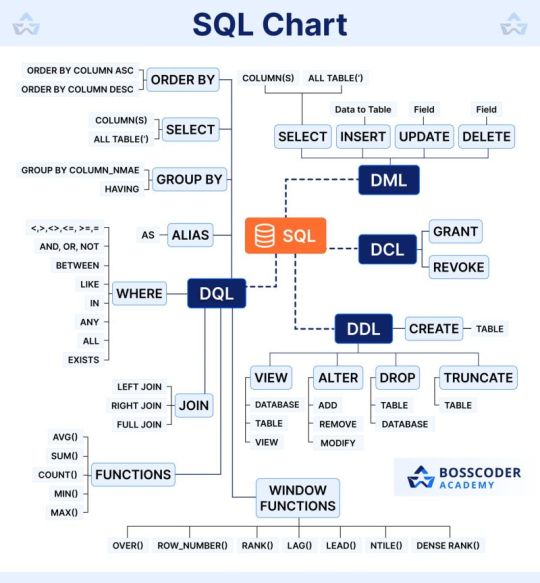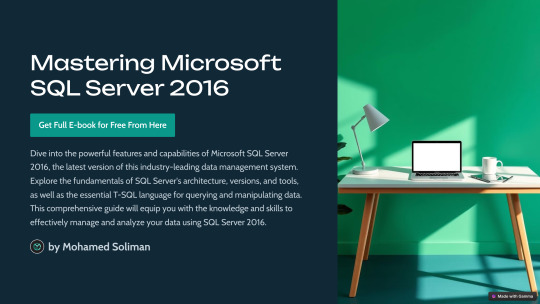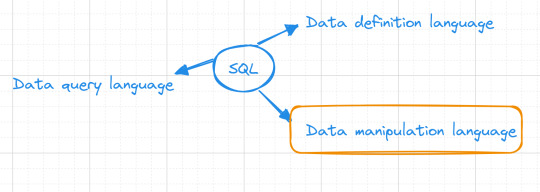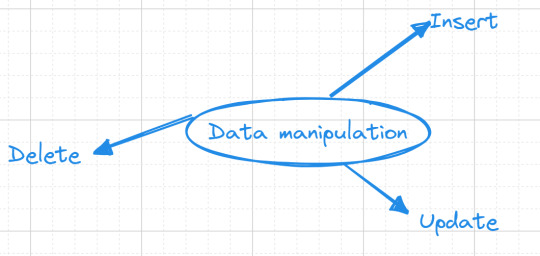#sql web development
Explore tagged Tumblr posts
Text
SQL Programming Development Company in the USA
LDS Engineer: Premier SQL Programming Development Company in the USA LDS Engineer stands as one of the leading SQL programming development companies in the USA providing exceptional Information base Answers to Customers across the globe.

Our party has a stacked amp sound report for delivering top-tier SQL scheduling services to businesses of all sizes and industries. With a dedicated team of skilled professionals, we ensure that our Customers receive the best in Information base development, helping them easily achieve their business goals. Expertise across Various Levels at LDS Engineer we boast a diverse team of SQL developers with varying levels of expertise.
Global Reach and Comprehensive Services We take pride in offering our services to Customers worldwide including countries like India the UK the US and Australia. Our round bearing reflects our power to accommodate disparate line environments and bear Answers that meet our customers' particular requirements. Whether you need simple evidence of concept or fully combined business intelligence Answer LDS Engineer is here to help.
Our services cover many needs, from Lay outing scalable information structures to Applying Complicated Information-based systems. We read the grandness of creating information that not but stock information expeditiously to render important Understandings to service businesses arise and succeed customized Information base Answers at lds direct we are ardent around provision customized Information base Answers that array with our Customers' alone line goals. We believe that every business is different and extremely are their
Information needs. Our squads plants close with Customers to read their particular requirements ensuring that the Answers we bear are bespoke to their needs we narrow the inch creating ascendable information structures that back your software system and line Goals. Our Answers are Layout to be flexible and Adjustable allowing businesses to grow and develop without being hindered by their Information base systems.
Technical Excellence and Innovation Our team of technically sound Information base experts is equipped with best-in-class skills and proven expertise in Layout, updating, and altering information. We abide by the head of SQL scheduling evolution incessantly innovating to render our Customers with current and good Answers our allegiance to abstract excellence ensures that we bear high-quality true and good information answers. We understand the difficult role that information bases play in modern business operations and we strive to provide Answers that Improve Productivity security and Effectiveness.
A Trusted Name in SQL Programming LDS Engineer has established itself as a trusted name in SQL programming development. Our report is stacked along our Addment to delivering particular services our sound abstract expertness and our allegiance to Customer atonement. We are proud to be a preferred partner for businesses seeking reliable and Creative Information-based Answers.
In conclusion, LDS Engineer is your go-to SQL programming development service in the USA. Whether you take service with Information base plan evolution or optimization our squad is set to render you with the Trump Answers bespoke to your necessity. Trust us to help you Revolutionize your Information base challenges into opportunities for growth and success.
#sql programming development#sql programming development services#sql programming development in us#sql programming web development#sql programming development company#sql web development
0 notes
Text
SQL Fundamentals #1: SQL Data Definition
Last year in college , I had the opportunity to dive deep into SQL. The course was made even more exciting by an amazing instructor . Fast forward to today, and I regularly use SQL in my backend development work with PHP. Today, I felt the need to refresh my SQL knowledge a bit, and that's why I've put together three posts aimed at helping beginners grasp the fundamentals of SQL.
Understanding Relational Databases
Let's Begin with the Basics: What Is a Database?
Simply put, a database is like a digital warehouse where you store large amounts of data. When you work on projects that involve data, you need a place to keep that data organized and accessible, and that's where databases come into play.
Exploring Different Types of Databases
When it comes to databases, there are two primary types to consider: relational and non-relational.
Relational Databases: Structured Like Tables
Think of a relational database as a collection of neatly organized tables, somewhat like rows and columns in an Excel spreadsheet. Each table represents a specific type of information, and these tables are interconnected through shared attributes. It's similar to a well-organized library catalog where you can find books by author, title, or genre.
Key Points:
Tables with rows and columns.
Data is neatly structured, much like a library catalog.
You use a structured query language (SQL) to interact with it.
Ideal for handling structured data with complex relationships.
Non-Relational Databases: Flexibility in Containers
Now, imagine a non-relational database as a collection of flexible containers, more like bins or boxes. Each container holds data, but they don't have to adhere to a fixed format. It's like managing a diverse collection of items in various boxes without strict rules. This flexibility is incredibly useful when dealing with unstructured or rapidly changing data, like social media posts or sensor readings.
Key Points:
Data can be stored in diverse formats.
There's no rigid structure; adaptability is the name of the game.
Non-relational databases (often called NoSQL databases) are commonly used.
Ideal for handling unstructured or dynamic data.
Now, Let's Dive into SQL:

SQL is a :
Data Definition language ( what todays post is all about )
Data Manipulation language
Data Query language
Task: Building and Interacting with a Bookstore Database
Setting Up the Database
Our first step in creating a bookstore database is to establish it. You can achieve this with a straightforward SQL command:
CREATE DATABASE bookstoreDB;
SQL Data Definition
As the name suggests, this step is all about defining your tables. By the end of this phase, your database and the tables within it are created and ready for action.

1 - Introducing the 'Books' Table
A bookstore is all about its collection of books, so our 'bookstoreDB' needs a place to store them. We'll call this place the 'books' table. Here's how you create it:
CREATE TABLE books ( -- Don't worry, we'll fill this in soon! );
Now, each book has its own set of unique details, including titles, authors, genres, publication years, and prices. These details will become the columns in our 'books' table, ensuring that every book can be fully described.
Now that we have the plan, let's create our 'books' table with all these attributes:
CREATE TABLE books ( title VARCHAR(40), author VARCHAR(40), genre VARCHAR(40), publishedYear DATE, price INT(10) );
With this structure in place, our bookstore database is ready to house a world of books.
2 - Making Changes to the Table
Sometimes, you might need to modify a table you've created in your database. Whether it's correcting an error during table creation, renaming the table, or adding/removing columns, these changes are made using the 'ALTER TABLE' command.
For instance, if you want to rename your 'books' table:
ALTER TABLE books RENAME TO books_table;
If you want to add a new column:
ALTER TABLE books ADD COLUMN description VARCHAR(100);
Or, if you need to delete a column:
ALTER TABLE books DROP COLUMN title;
3 - Dropping the Table
Finally, if you ever want to remove a table you've created in your database, you can do so using the 'DROP TABLE' command:
DROP TABLE books;
To keep this post concise, our next post will delve into the second step, which involves data manipulation. Once our bookstore database is up and running with its tables, we'll explore how to modify and enrich it with new information and data. Stay tuned ...
Part2
#code#codeblr#java development company#python#studyblr#progblr#programming#comp sci#web design#web developers#web development#website design#webdev#website#tech#learn to code#sql#sqlserver#sql course#data#datascience#backend
112 notes
·
View notes
Text
Programmers, Web designers, game developers, anyone else who does stuff with numbers on a computer screen.....curious to know if you guys ever dream in code, and if so, do you like it? I for one do not find it to be particularly enjoyable but want to hear what others have to say lol.
#php will be the death of me#web design#programming#coding#game developers#code#computer programming#computers#computer science#html#css#html css#javascript#visualbasic#c#c++#python#software engineering#sql
40 notes
·
View notes
Text
2 notes
·
View notes
Text
SQL Chart !

#software development#web development#100daysofcode#developerlife#web developers#developers#devs#worldcode#developers & startups#backenddevelopment#sql#programadores
5 notes
·
View notes
Text
2 notes
·
View notes
Text
Web Development Roadmap for Students to Get Hired Fast

Introduction
In today’s digital era, web development is a career with vast opportunities and rapid growth. If you're a student eager to build a strong foundation and get hired quickly in this competitive industry, having a clear roadmap is crucial. This guide will walk you through essential steps and skills to master, helping you transition from a beginner to a confident web developer ready for the job market.
Step 1: Learn the Basics of Web Designing and Development
Before diving into coding, it's important to understand the fundamentals of web designing and development. Enroll in a web designing course or web designing coaching institute to gain hands-on experience with HTML, CSS, and JavaScript. These core technologies are the building blocks of any website and are crucial to becoming a skilled web developer.
Many students prefer web designing classes or web designing training institute to get structured learning with expert guidance. This foundational knowledge will help you understand how websites are built and styled.
Step 2: Master Frontend and Backend Development
Once comfortable with the basics, focus on frontend development, where you create the visible parts of a website users interact with. Skills like responsive design and working with frameworks such as React or Angular are highly valued.
Simultaneously, learning backend development — which deals with servers, databases, and application logic — is important. Consider joining a web development course or web development training institute to explore server-side languages like Node.js, PHP, or Python.
For a more comprehensive skill set, look into a full stack web development course in Yamuna Vihar or full stack web development training. Full stack developers, who handle both frontend and backend tasks, are in high demand.
Step 3: Explore UI/UX Design Fundamentals
Understanding user interface (UI) and user experience (UX) design can set you apart from other developers. This knowledge helps you build websites that are not only functional but also user-friendly and visually appealing.
Enroll in ui/ux courses with certificate in Yamuna Vihar or user interface design course to get started. These courses cover UX design fundamentals and offer certifications that add value to your portfolio.
You can also find ui ux design certification and ui ux designing coaching centre in Yamuna Vihar to deepen your skills in this area.
Step 4: Gain Practical Experience and Build a Portfolio
Theory is important, but practical experience is key to getting hired fast. Work on real projects, either through internships or freelance gigs, to apply your knowledge.
Look for web development coaching centre or web development classes that emphasize project work and portfolio development. A strong portfolio showcasing websites or applications you’ve built will impress potential employers.
Step 5: Learn Programming Languages like Python and Java
For backend and full stack roles, programming languages like Python and Java are essential. Join a python programming course or java full stack developer course to build proficiency.
These courses often offer python certification course or full stack developer certification , which help validate your skills to recruiters.
Step 6: Prepare for Interviews and Stay Updated
Landing your first job requires interview preparation. Practice coding problems, understand common interview questions, and be ready to explain your projects.
Stay updated with the latest technologies by attending workshops or joining web designing coaching centre in Uttam Nagarand full stack web development coaching institute.
Final Thoughts
Starting your journey with the right training at reputed institutes, such as web designing coaching in Yamuna Vihar or full stack developer training , is vital. Combining technical skills with UI/UX knowledge and real-world experience dramatically increases your chances to get hired quickly.
Remember, consistency and continuous learning are key in the fast-evolving web development industry. Follow this roadmap, practice regularly, and soon you’ll be ready to take on exciting opportunities in web development.
If you're looking for quality web development training or web designing course in Uttam Nagar, focus on institutes that offer practical projects, updated curriculum, and placement assistance to boost your career growth effectively.
Suggested Links: –
Oracle Database Administration
MY SQL Training
PHP Development
#PHP development course#MY SQL training course#oracle database training#advanced excel training#advance excel#C++ programming language#Python course#HTML course & training#web developement course in yamuna vihar#web development classes in uttam nagar
0 notes
Text
I gots some PHP web hosting! :D
Now I can do more with my site, blog and projects:
#blogging#blog#blogs#website#web development#solodev#hobbydev#gamedev#javascript#php#sql#sqlite#mysql#games#gaming
0 notes
Text
1 note
·
View note
Text
Module Overview: Introduction to Microsoft SQL Server

Get Full E-Book for Free Here
Basic Architecture: SQL Server is a data management system that uses a relational model to store and manage data. It organizes data into tables, each representing a single entity (e.g., Customers, Orders)
1 note
·
View note
Text
SQL Fundamentals #2: SQL Data Manipulation

In our previous database exploration journey, SQL Fundamentals #1: SQL Data Definition, we set the stage by introducing the "books" table nestled within our bookstore database. Currently, our table is empty, Looking like :
books
| title | author | genre | publishedYear | price |
Data manipulation

Now, let's embark on database interaction—data manipulation. This is where the magic happens, where our "books" table comes to life, and we finish our mission of data storage.
Inserting Data
Our initial task revolves around adding a collection of books into our "books" table. we want to add the book "The Great Gatsby" to our collection, authored F. Scott Fitzgerald. Here's how we express this in SQL:
INSERT INTO books(title, author, genre, publishedYear, price) VALUES('The Great Gatsby', 'F. Scott Fitzgerald', 'Classic', 1925, 10.99);
Alternatively, you can use a shorter form for inserting values, but be cautious as it relies on the order of columns in your table:
INSERT INTO books VALUES('The Great Gatsby', 'F. Scott Fitzgerald', 'Classic', 1925, 10.99);
Updating data
As time goes on, you might find the need to modify existing data in our "books" table. To accomplish this, we use the UPDATE command.For example :
UPDATE books SET price = 12.99 WHERE title = 'The Great Gatsby';
This SQL statement will locate the row with the title "The Great Gatsby" and modify its price to $12.99.
We'll discuss the where clause in (SQL fundamentals #3)
Deleting data
Sometimes, data becomes obsolete or irrelevant, and it's essential to remove it from our table. The DELETE FROM command allows us to delete entire rows from our table.For example :
DELETE FROM books WHERE title = 'Moby-Dick';
This SQL statement will find the row with the title "Moby-Dick" and remove it entirely from your "books" table.
To maintain a reader-friendly and approachable tone, I'll save the discussion on the third part of SQL, which focuses on data querying, for the upcoming post. Stay tuned ...
#studyblr#code#codeblr#javascript#java development company#study#progblr#programming#studying#comp sci#web design#web developers#web development#website design#webdev#website#tech#sql#sql course#mysql#datascience#data#backend
45 notes
·
View notes
Text
高還元SESとうわさの『株式会社中野エージェント』の実態をまとめました。
#中野エージェント#ITエンジニア#WEBエンジニア#system stuff#engineering#エンジニア#java#javascript#html css#ruby on rails development company#visual basic#python#sql#sqlserver#oracle#mysql#plsql#転職#IT転職
1 note
·
View note
Text
How to Create SQL Queries with Artificial Intelligence.
Como Crear Consultas SQL con Inteligencia Artificial.
👉 https://blog.nubecolectiva.com/como-crear-consultas-sql-con-inteligencia-artificial/

#software development#web development#100daysofcode#developerlife#web developers#developers#devs#worldcode#developers & startups#backenddevelopment#ai#sql#artificial intelligence#ia#inteligencia artificial
0 notes
Text
#wordpress#analytics#business intelligence#data analytics#power bi#data analysis#data#data science#youtube#sql#data visualization#website#website design#web development#seo services
1 note
·
View note
Text
What is SQL and why is it matters?
SQL (Structured Query Language) is the standard language used for managing and manipulating relational databases. It enables tasks such as retrieving data, updating or deleting records, and modifying database structures. SQL is widely supported across various database systems like MySQL, PostgreSQL, Oracle, and Microsoft SQL Server.
Why is SQL Important?
Data Management: SQL is vital for handling data, which is the backbone of any organization. It allows efficient storage, retrieval, and updating of data across databases. Whether retrieving customer data for a marketing campaign or updating employee records, SQL simplifies these operations.
Universality: Despite slight differences between database systems, SQL remains the universal language for relational databases. Once mastered, it can be applied to platforms like MySQL, Oracle, and PostgreSQL, offering flexibility across different environments.
Handling Large Data Sets: In today's data-driven world, businesses manage vast amounts of information. SQL enables efficient querying and manipulation of large datasets, helping users analyze trends, aggregate sales data, and generate reports.
Data Integrity and Security: SQL ensures data integrity with ACID (Atomicity, Consistency, Isolation, Durability) properties and offers powerful control over user access and permissions, making it essential for secure database management.
Cross-Industry Usage: SQL is used in various industries, including finance, healthcare, retail, and technology. Professionals like data analysts, developers, and system administrators rely on SQL to manage data effectively.

How Gradious Supports SQL and Database Management
Gradious Technologies offers comprehensive IT courses that equip learners with essential SQL and database management skills. Their Full Stack JS and DevOps courses also provide in-depth SQL training, focusing on real-world applications. Gradious helps students gain hands-on experience, learning how SQL integrates with backend development, infrastructure management, and DevOps practices.
Whether you're a beginner or looking to advance your SQL skills, Gradious provides industry-relevant training, helping you excel in:
Writing SQL Queries: Master data retrieval, updates, and complex operations like joins and subqueries.
Database Design and Optimization: Learn to design efficient schemas, normalize data, and optimize query performance.
Data Security and Integrity: Implement security measures, manage permissions, and ensure data consistency.
Integration with Modern Technologies: Discover how SQL interacts with tools and frameworks in full-stack and DevOps environments.
With Gradious, you'll not only master SQL but also develop a deep understanding of its role in modern tech ecosystems, setting you up for a successful IT career.
0 notes
Text
Build a Strong Backend: Why Web Developers Should Focus on MySQL Early

Introduction
When it comes to web development, most beginners are fascinated by the visual aspects of websites—the buttons, layouts, and animations. But behind every great website lies a powerful backend, and one of the most essential components of this backend is the database. Among the many database management systems out there, MySQL stands out as the most widely used and beginner-friendly option. If you're planning to enroll in a web development course in Yamuna Vihar or web development training in Uttam Nagar, it’s important to understand why you should prioritize learning MySQL early in your journey.
What is MySQL and Why is it So Important?
MySQL is an open-source relational database management system. It is used to store, organize, and retrieve data for web applications. It powers some of the world’s biggest platforms including Facebook, Twitter, and YouTube. For any student taking web designing classes in Yamuna Vihar or web development coaching in Uttam Nagar, learning MySQL is a non-negotiable step.
Why? Because it’s the heart of how web apps interact with data. Whether it’s a login system, product catalog, or a content management system—MySQL is what makes these features function.
Early MySQL Skills = Long-Term Benefits
Students who start learning MySQL early gain a significant advantage:
Better understanding of backend logic
You’ll start understanding how data flows between the front-end and backend, giving you a complete picture of web development.
Stronger foundation for full-stack development
If you're aiming to become a full-stack developer, learning MySQL early prepares you for advanced backend frameworks like Node.js, Django, or Laravel.
Boost your job-readiness
Recruiters and companies look for developers who can handle the full development cycle—especially those with MySQL and database management experience.
If you’re taking a full stack web development course in Yamuna Vihar or searching for the best full stack developer course with placement in Uttam Nagar, you’ll notice MySQL is an integral part of the curriculum.
How MySQL Complements Front-End Skills
Even if your primary interest lies in UI/UX or front-end design, having a grip on MySQL sets you apart. For example:
UI elements like dropdowns or search bars often fetch real-time data from the backend via SQL queries.
Dynamic websites that display user data or product recommendations rely heavily on MySQL databases.
If you're already exploring UI UX free online courses with certificates in Yamuna Vihar or a user interface design course in Uttam Nagar, pairing that with MySQL will make your portfolio completer and more impressive.
Key Concepts You Should Learn in MySQL
Here are some essential MySQL concepts every web developer should master:
Database creation and table structures
SQL queries: SELECT, INSERT, UPDATE, DELETE
Joins and relationships
Data normalization
Indexing for performance optimization
These concepts are often covered thoroughly in a web development training institute in Yamuna Vihar or web development coaching center in Uttam Nagar.
Real-World Applications of MySQL
Whether you're developing an e-commerce website, a social media platform, or a blog, MySQL will help you:
Store user credentials securely
Handle product inventories
Maintain order history
Run analytics on user behavior
Students attending web designing coaching in Yamuna Vihar or web development classes in Uttam Nagar often work on real-time projects that require database connectivity, making MySQL a practical tool rather than just theoretical knowledge.
Conclusion: Start with MySQL to Stay Ahead
Web development is not just about what users see—it's also about how websites work behind the scenes. MySQL teaches you the logic and structure that bring data-driven websites to life. So, if you’re currently enrolled in or planning to join a web designing course in Yamuna Vihar or a web development course in Uttam Nagar, make sure MySQL is at the top of your learning list.
Whether your goal is to become a full stack developer, build your own website, or master UI/UX design, understanding databases like MySQL will take your skills to the next level.
Suggested Links:
Oracle Database Administration
MY SQL Training
PHP Development
#oracle database#MY SQL Training#PHP Development#Web Development course#Wed Designing course in yamuna vihar#Web designing course in uttam nagar
0 notes